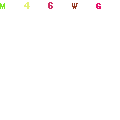There are a number of observations that have been made over the years that seem to indicate that there are particular characteristics that “genuine” (or non-manmade) formations appear to exhibit. Some of the observations are listed below:
In what kind of crops do they occur? Crop circles have been reported in mostly barley and wheat. But, they also appear in corn, oats, oilseed rape (canola), grass, rice fields, trees, sand, and even snow.
Where Do They Appear?
They have appeared on almost every continent and in over 70 countries worldwide — including the US, Canada, Australia, Brazil, Russia, India, Germany, and South Africa. There seems to be a correlation with many forming near ancient sites.
Physical changes of plants and soil – not only does the physical appearance of seem to change (it looks dehydrated), but there is change at the molecular level. Research has been conducted over a ten year period with samples and thorough laboratory testing carried out by the biophysicist Dr. Levengood, Nancy Talbott, and John Burks — the BLT Research Team, and a small army of volunteers worldwide.
Their findings include enlarged cell walls, expulsion cavities in the nodes of the plant stalks, significantly extended node lengths, and changes to the soil composition (ie. vastly higher level of magnetite concentration) from samples taken within the crop formations in contrast to the control samples taken from outside the circles.
Reported Increase in Crop Yield
Some farmers and researchers have independently reported greater yield in the years following the appearance of formations in their fields. In 1997, Tim Carson who farms East Field (where the “DNA” formation appeared in 1996) reported to researchers that his yield was up 30-40%. The increased yield that usually only comes with annual re-hybridization (done in labs) remains the same level even in up to 5th generation crops coming from crop circles, according to researcher Steve Purkaple.
Swirl in multiple directions – many formations have complex woven patterns of the swirled crops. Not only do the plants in the formation swirl clockwise or counter-clockwise, but sometimes certain sections will swirl one direction and layers on top are going another direction. They sometimes even have multiple layers swirled in different directions.
Woven stalks
Other times the stalks are actually woven like a piece of loose cloth on the floor of the formation. This has been observed by various researchers in the UK…

